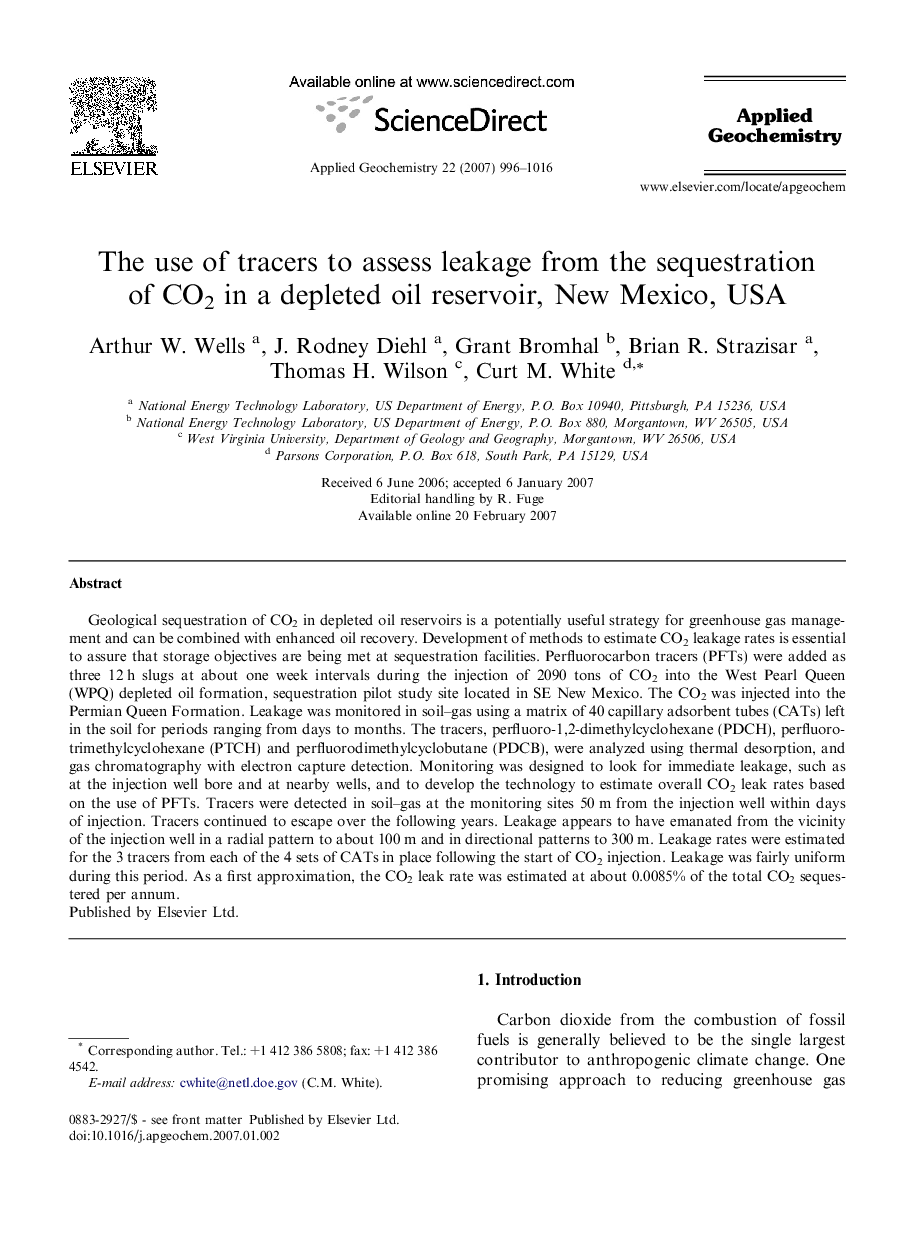| Article ID | Journal | Published Year | Pages | File Type |
|---|---|---|---|---|
| 4437738 | Applied Geochemistry | 2007 | 21 Pages |
Geological sequestration of CO2 in depleted oil reservoirs is a potentially useful strategy for greenhouse gas management and can be combined with enhanced oil recovery. Development of methods to estimate CO2 leakage rates is essential to assure that storage objectives are being met at sequestration facilities. Perfluorocarbon tracers (PFTs) were added as three 12 h slugs at about one week intervals during the injection of 2090 tons of CO2 into the West Pearl Queen (WPQ) depleted oil formation, sequestration pilot study site located in SE New Mexico. The CO2 was injected into the Permian Queen Formation. Leakage was monitored in soil–gas using a matrix of 40 capillary adsorbent tubes (CATs) left in the soil for periods ranging from days to months. The tracers, perfluoro-1,2-dimethylcyclohexane (PDCH), perfluorotrimethylcyclohexane (PTCH) and perfluorodimethylcyclobutane (PDCB), were analyzed using thermal desorption, and gas chromatography with electron capture detection. Monitoring was designed to look for immediate leakage, such as at the injection well bore and at nearby wells, and to develop the technology to estimate overall CO2 leak rates based on the use of PFTs. Tracers were detected in soil–gas at the monitoring sites 50 m from the injection well within days of injection. Tracers continued to escape over the following years. Leakage appears to have emanated from the vicinity of the injection well in a radial pattern to about 100 m and in directional patterns to 300 m. Leakage rates were estimated for the 3 tracers from each of the 4 sets of CATs in place following the start of CO2 injection. Leakage was fairly uniform during this period. As a first approximation, the CO2 leak rate was estimated at about 0.0085% of the total CO2 sequestered per annum.
